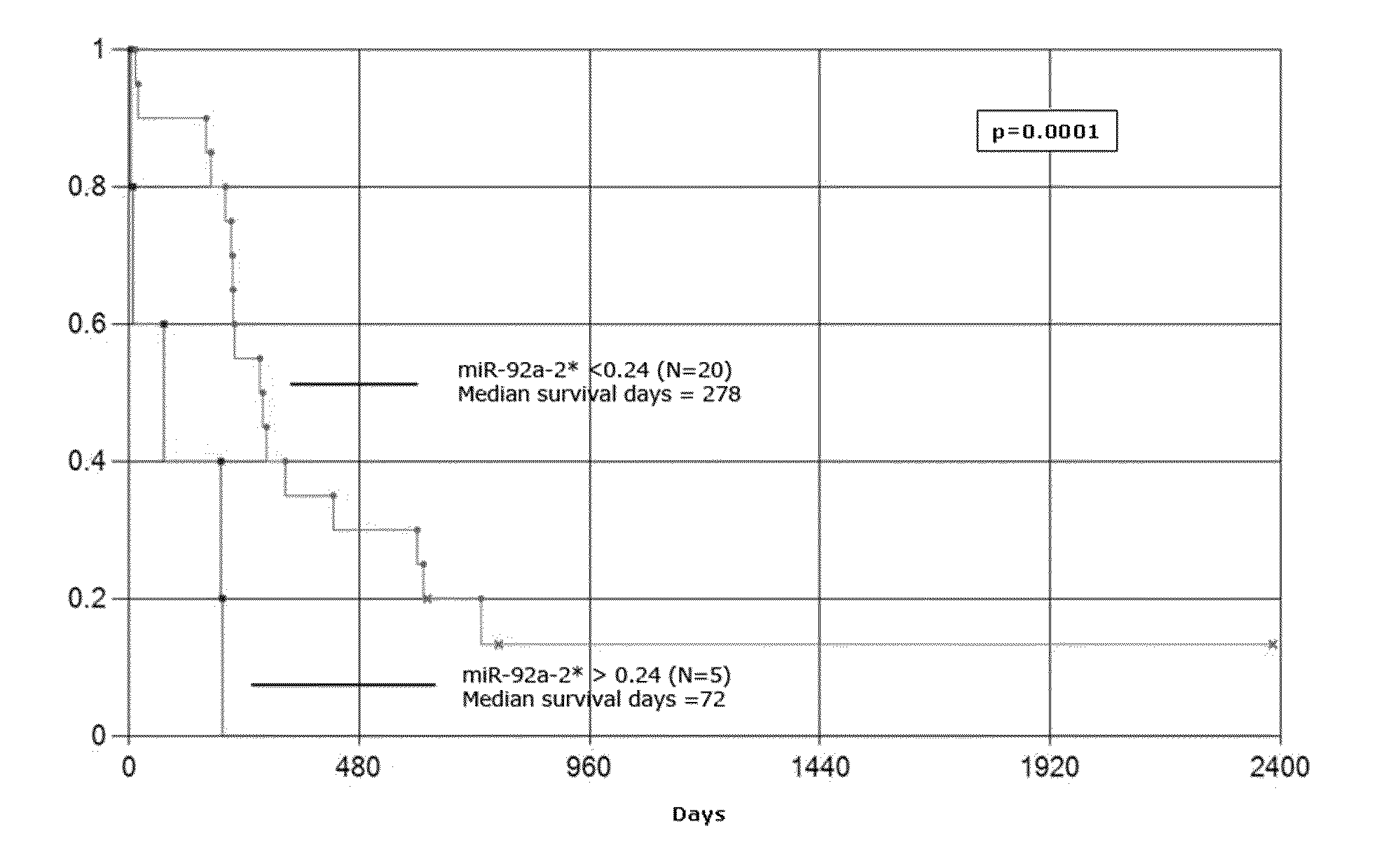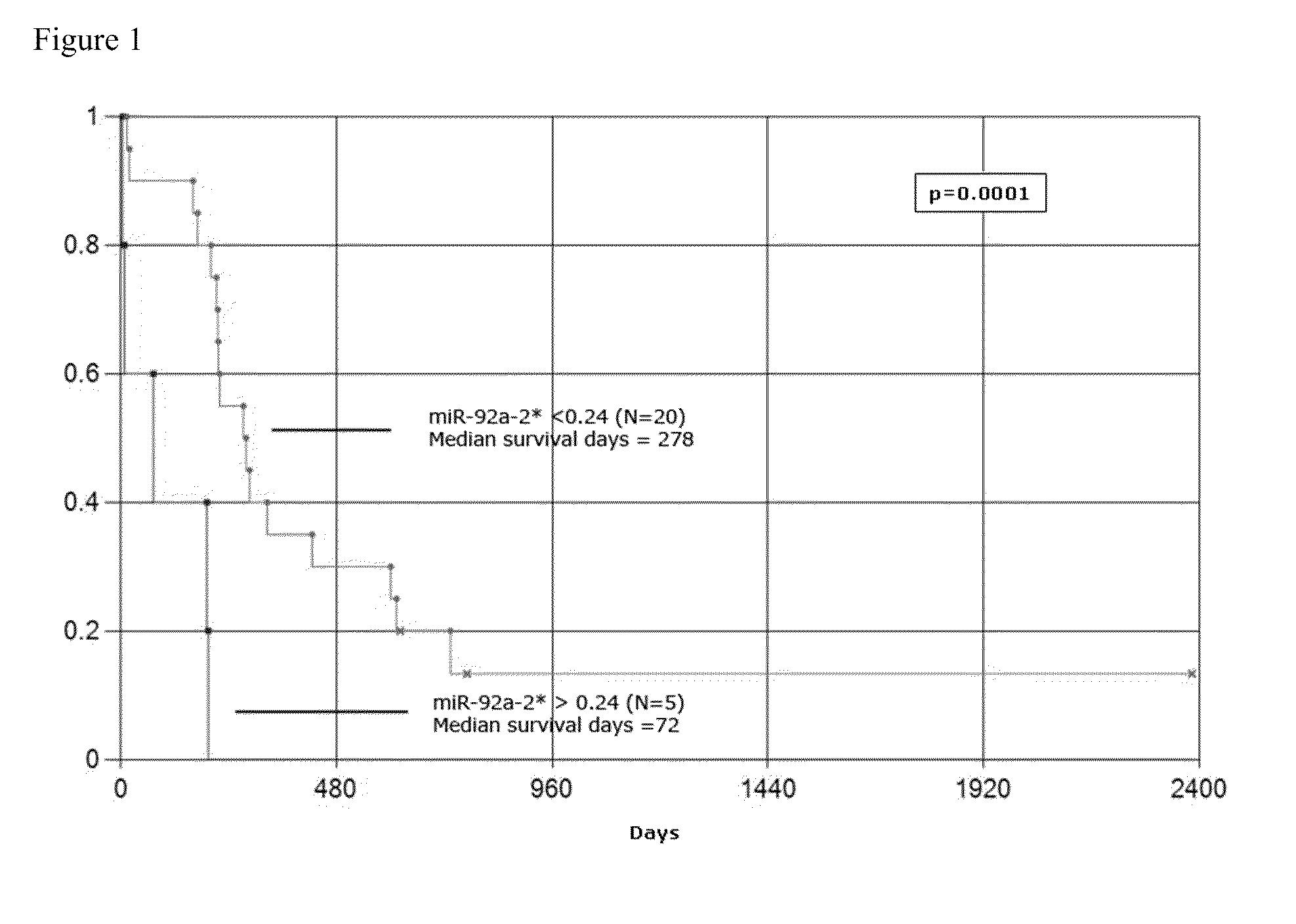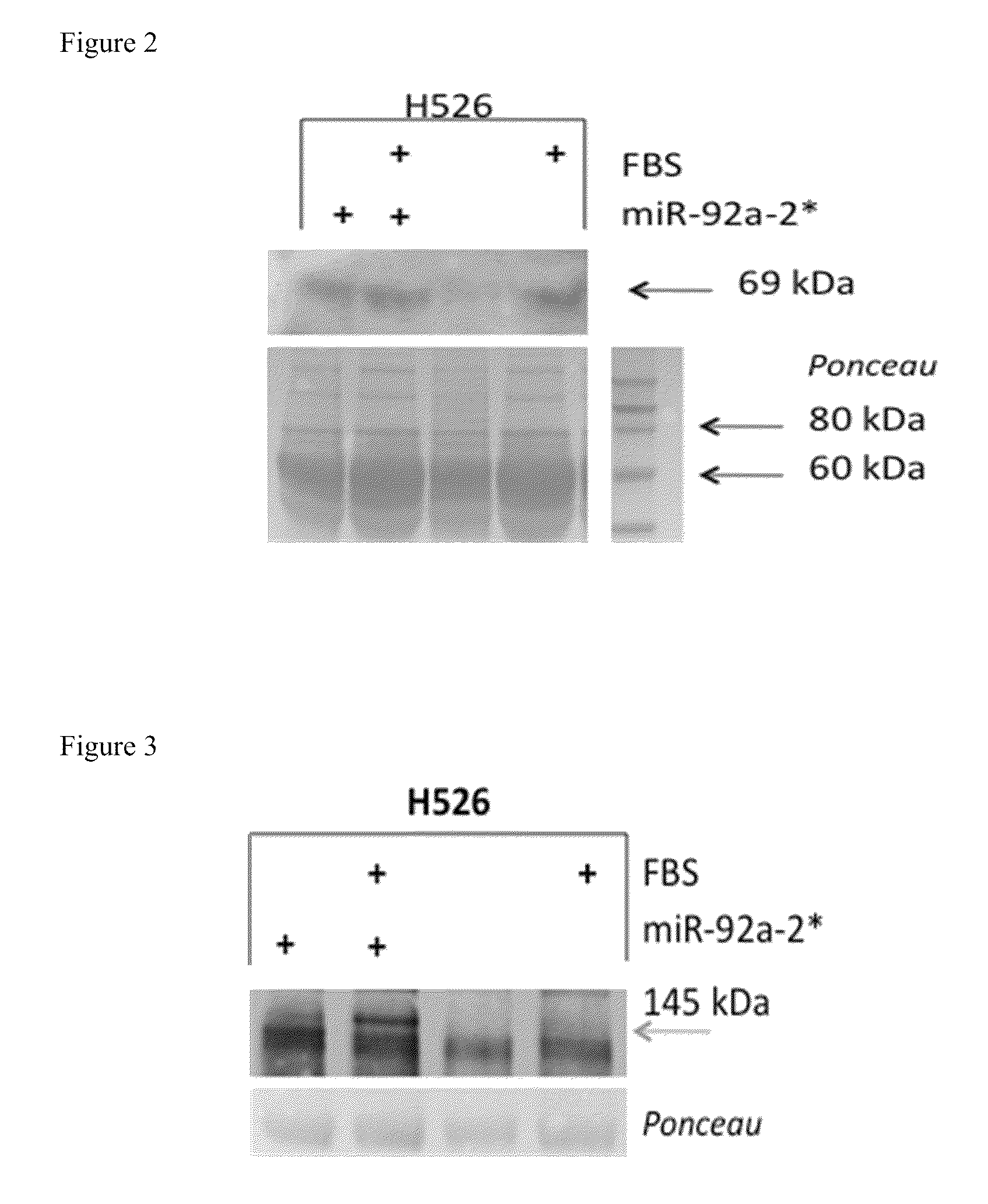Methods and kits to predict prognostic and therapeutic outcome in small cell lung cancer
a small cell lung cancer and prognostic technology, applied in the field of kits to predict the prognostic and therapeutic outcome of small cell lung cancer, can solve the problems of inferior outcomes of disease progression at first response assessment (chemoresistance), suffering the debilitating side effects of systemic chemotherapy, and ultimately defining the cellular phenotype by protein expression, so as to facilitate the performance of a tes
- Summary
- Abstract
- Description
- Claims
- Application Information
AI Technical Summary
Benefits of technology
Problems solved by technology
Method used
Image
Examples
example
MiRNA Biomarkers Predictive of Outcome in Small Cell Lung Cancer
[0094]Elements and acts in the example are intended to illustrate the invention for the sake of simplicity and have not necessarily been rendered according to any particular sequence or embodiment. The example is further intended to establish possession of the invention by the Inventor.
[0095]Tumor samples were obtained after prior approval of the local Institutional Review Board (IRB) from patients diagnosed between the period 2001 to 2007 and receiving care and follow-up at Scottsdale Healthcare (Scottsdale, Ariz.). All patients subsequently received systemic chemotherapy. Clinical characteristics included age at diagnosis, gender, SCLC histology, limited- or extensive-stage disease, smoking history, and statin use. The presence of baseline co-morbidities including: cardiovascular disease (CAD), lung disease [chronic obstructive pulmonary disease (COPD) or emphysema], thrombotic event (deep vein thrombosis or pulmonary...
PUM
| Property | Measurement | Unit |
|---|---|---|
| temperature | aaaaa | aaaaa |
| volumes | aaaaa | aaaaa |
| nucleic acid | aaaaa | aaaaa |
Abstract
Description
Claims
Application Information
 Login to View More
Login to View More - R&D
- Intellectual Property
- Life Sciences
- Materials
- Tech Scout
- Unparalleled Data Quality
- Higher Quality Content
- 60% Fewer Hallucinations
Browse by: Latest US Patents, China's latest patents, Technical Efficacy Thesaurus, Application Domain, Technology Topic, Popular Technical Reports.
© 2025 PatSnap. All rights reserved.Legal|Privacy policy|Modern Slavery Act Transparency Statement|Sitemap|About US| Contact US: help@patsnap.com



